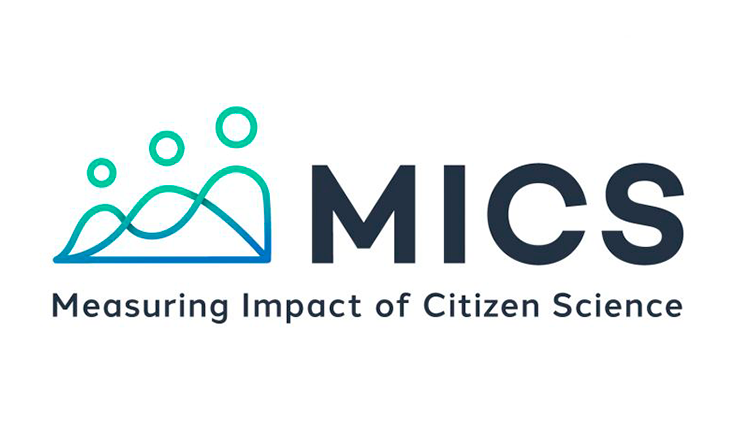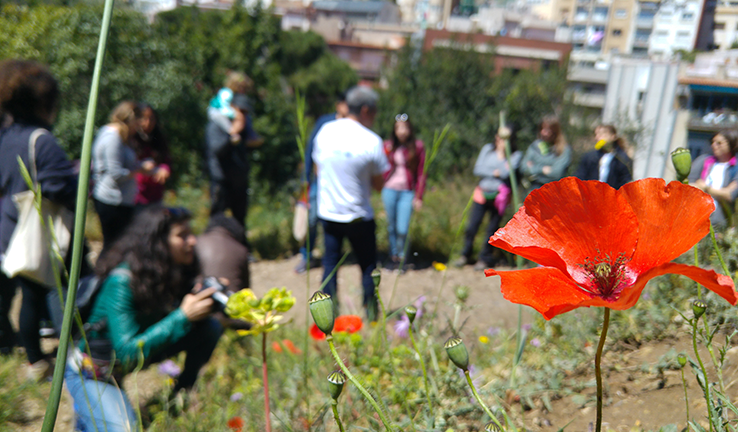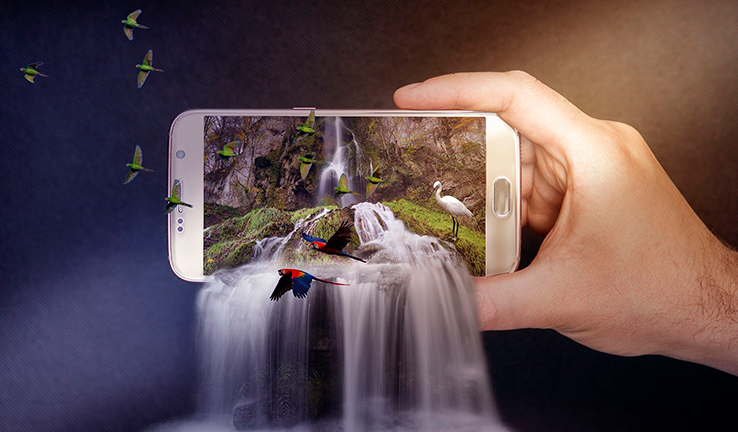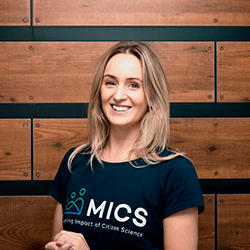Citizen science is work undertaken by educators and scientists together with citizen communities to advance science, foster a broad scientific mentality, and/or encourage democratic engagement; allowing people in society to join the debate about complex modern problems (Ceccaroni, 2017). Citizen science is far from new, with its origins thought to go back at least a couple of millennia. In ancient China, for example, migratory locusts frequently destroyed harvests, and local residents have tracked their outbreaks for some 2,000 years (Irwin, 2018).

Innovation is the use of a new idea, product or method. According to the European Commission, “Research and innovation plays an essential role in triggering smart and sustainable growth”.
They state that “by producing new knowledge, research is central to developing new and innovative products, processes and services”, allowing humankind to become ever more productive and prosperous.
So how important is innovation in citizen science? Certainly important enough for Earthwatch Europe – an environmental charity which uses the power of citizen science to drive its mission of mitigating the impacts of environmental crises – to dedicate an entire team to it. The Innovation Team works on Horizon 2020 and Horizon Europe projects; the EU’s key funding programmes for research and innovation – the latter with a budget of €95.5 billion. Indeed, Earthwatch partners in a number of EU-funded innovative citizen-science projects, including MICS, MONOCLE and Cos4Cloud.
How EarthWatch innovates in its citizen science projects?
MICS aims to develop approaches and tools to assess citizen-science impacts across five domains: society, environment, economy, governance, and science and technology. One of these tools is an impact-assessment platform; a platform which will allow project coordinators to measure the impact of the citizen-science initiatives they manage at any stage of the project’s lifecycle. Whilst impact assessment itself is nothing new, the MICS platform takes the state-of-the-art in terms of indicators of impact, builds on it, and converts what are typically open indicators into a comprehensive set of closed questions and corresponding answers.
The innovation here is the accessibility of a previously laborious process of impact assessment; enabling projects which may not have had the resources to conduct an in-depth assessment of their impacts to be able to do so.

MONOCLE (Multiscale Observation Networks for Optical monitoring of Coastal waters, Lakes and Estuaries) is developing tools to lower the cost of acquisition, maintenance, and regular deployment of in situ sensors to monitor optical water quality. In this project, the innovation is the reduced cost of otherwise complicated and expensive apparatus.
For example, water transparency, colour and pH can all be measured with the “mini-Secchi disk”, a handheld device that is easily deployed from shore or boat by citizen scientists; while the DIY version of the KdUINO – a low-cost device to measure water transparency currently being upgraded to gather information at different colour bands – will be used to engage hobbyists and students to build their own instruments and collaborate in data collection. Of course, such a strategy depends on effective engagement between science professionals and citizen scientists. One way to maintain engagement is via citizen observatories; community-based environmental monitoring and information systems that invite individuals to collect and share observations (WeObserve).

The Cos4Cloud project is developing innovative technologies to support citizen science observatories by improving: data quality, via simplifying expert verification, or using AI to improve identification; data interoperability, by facilitating integration between data sets; data accessibility, by processing data and ensuring open access; the sustainability and maintenance of citizen observatories, for example, through low-cost technology that can be used, adapted and replicated (Woods, 2022).
For instance, MECODA is an online tools repository to facilitate the analysis and viewing of all sorts of citizen science data.
MECODA’s infographic explains that you could use one tool from the MECODA repository to create a ‘distribution graph’ and visualize the number of observations of, let’s say, butterfly species over time; or you could perform a participation analysis after hosting a citizen science event – such as a “Blitz” – and investigate how many participants attended, collected observations or took part in discussions.
FreshWater Watch (FWW) is one such observatory that the Cos4Cloud project is working to strengthen through innovative technology like MECODA. FreshWater Watchers investigate their local freshwater ecosystems, recording basic visual observations, such as pollution sources or the presence of wildlife; nitrate and phosphate concentrations; and turbidity, or cloudiness, of the water. Results from FWW have the potential to contribute to the Sustainable Development Goals – a collection of 17 interlinked global goals designed to be a “blueprint to achieve a better and more sustainable future for all”. Indeed, FWW methods are used globally by projects such as Cos4Cloud, MONOCLE and MICS.
In MICS, FWW methods are used in the Italian case study, located along the Marzenego River. Local citizens, municipal authorities and statutory agency associated with the management of the Marzenego River and tributaries, held discussions on problems related to the river and its wetlands, and identified priorities for citizen monitoring through co-design workshops.

Co-design refers to collaborations in which several stakeholders from any sector of society – civil society, industry, government or academia – actively join forces to tackle a shared challenge. Much like citizen science and impact assessment, co-design itself isn’t necessarily novel, but the way in which it is applied can be. In Cos4Cloud, it is utilised to test the developing services – like MECODA – among all end-users involved, to improve the functional specification of these services. In MICS it empowered secondary school students to develop their own methods for counting bacteria in a water sample, and the confidence to present their results to municipal authorities; driving democratic responsibility for their work.
Both Cos4Cloud and MICS publicise the results of their work in multiple languages – you can watch how Cos4Cloud is boosting citizen science technologies in seven different languages, here – which may not seem particularly innovative, until you realise that 90% of the most Highly Cited Researchers (around 4000 individuals from 20 fields of science) were from English speaking countries in 2018. The remaining 10% published their findings in English (Clarivate Analytics). We know that participants in citizen science projects most value the accessibility of their collected data and communication of project findings (de Vries, 2019), presumably in their native tongue, so an innovative shift away from anglocentric communication would no doubt enhance participant satisfaction and, therefore, engagement across citizen science projects.
The irony as I type that in English is not lost on me.
The simplicity of relying on local language can be complemented by the use of simple equipment; the provision of printed materials, paper and pencils can be more appropriate than fancy apps and technology. In South Africa, for example, 20 to 22 million people use a smartphone, which accounts for about one third of the country’s population; compared to the 87% of adults who owned a smartphone in the U.K. in 2020 (Statista). This is why projects such as FWW allow citizens to use either a smartphone with the FreshWater Watch App or a paper data sheet; it allows for more complete inclusivity.

Thus, innovation in citizen science is context dependent – with one person’s helpful tool being another’s hindrance. We have novel ways of measuring the impact of citizen science, but for citizen science to be impactful we need to use the right equipment; we have new, low-cost tools and innovative technology, but to be used by citizen scientists we need high engagement; we can have high engagement, but to drive change we need to foster ownership.
Citizen science is more than just the act of professional scientists bringing research to nonprofessional people; it’s about shaping a scientific mentality and enabling people to take responsibility for the knowledge they generate.
This is not to say that new technologies, applications and games are redundant in citizen science; but that as the field expands – with the increasing potential to enact power at the political level – we must look at the context-specific barriers between people and science, and deconstruct them appropriately.
That is true innovation in citizen science.

About this articles’s author: Sasha Woods is Researcher for Impact and Innovation at Earthwatch Europe. She leads on the dissemination and exploitation work-packages of the three EU-funded projects discussed here; Cos4Cloud, MICS and MONOCLE. Want to know more? Please email Sasha; swoods@earthwatch.org.uk

















